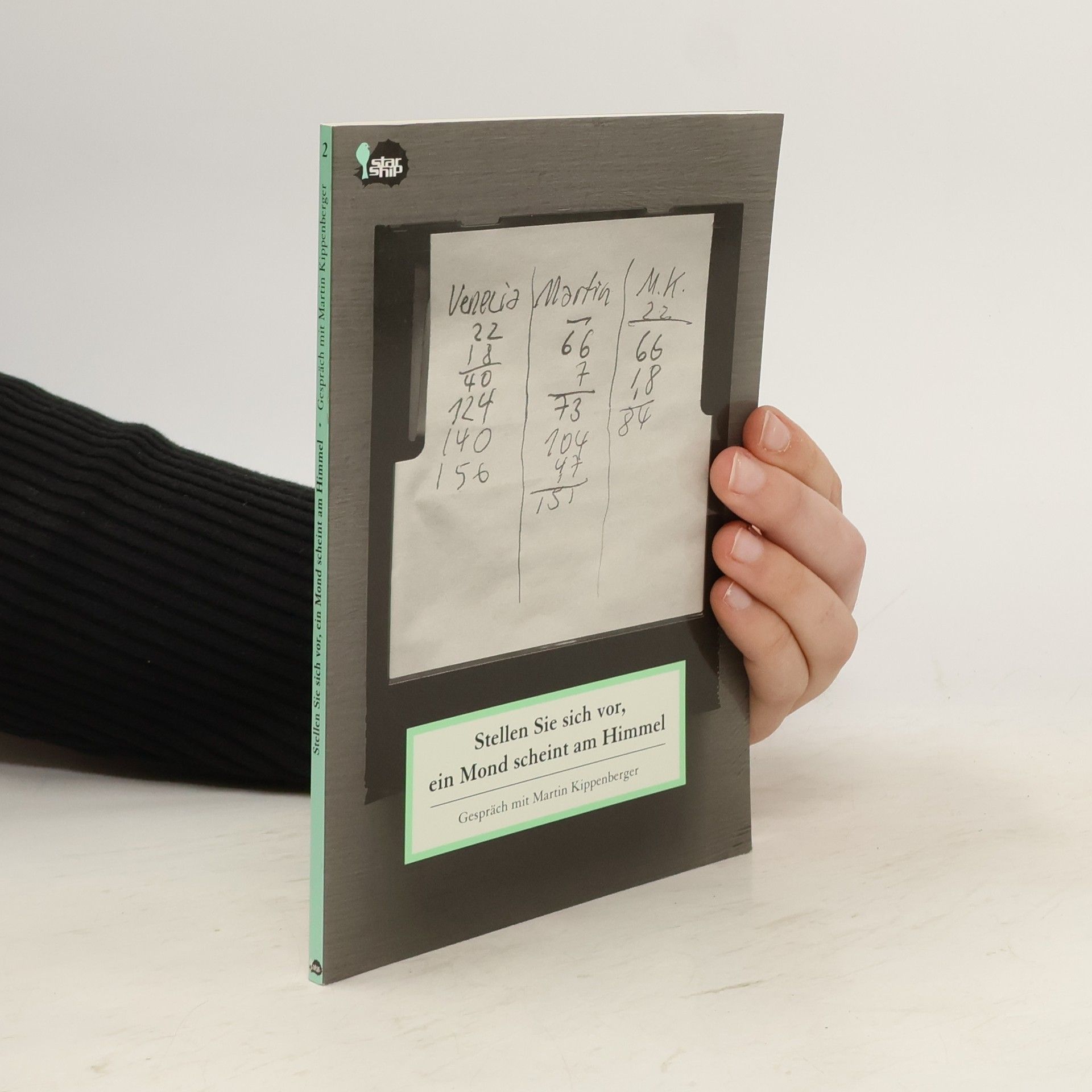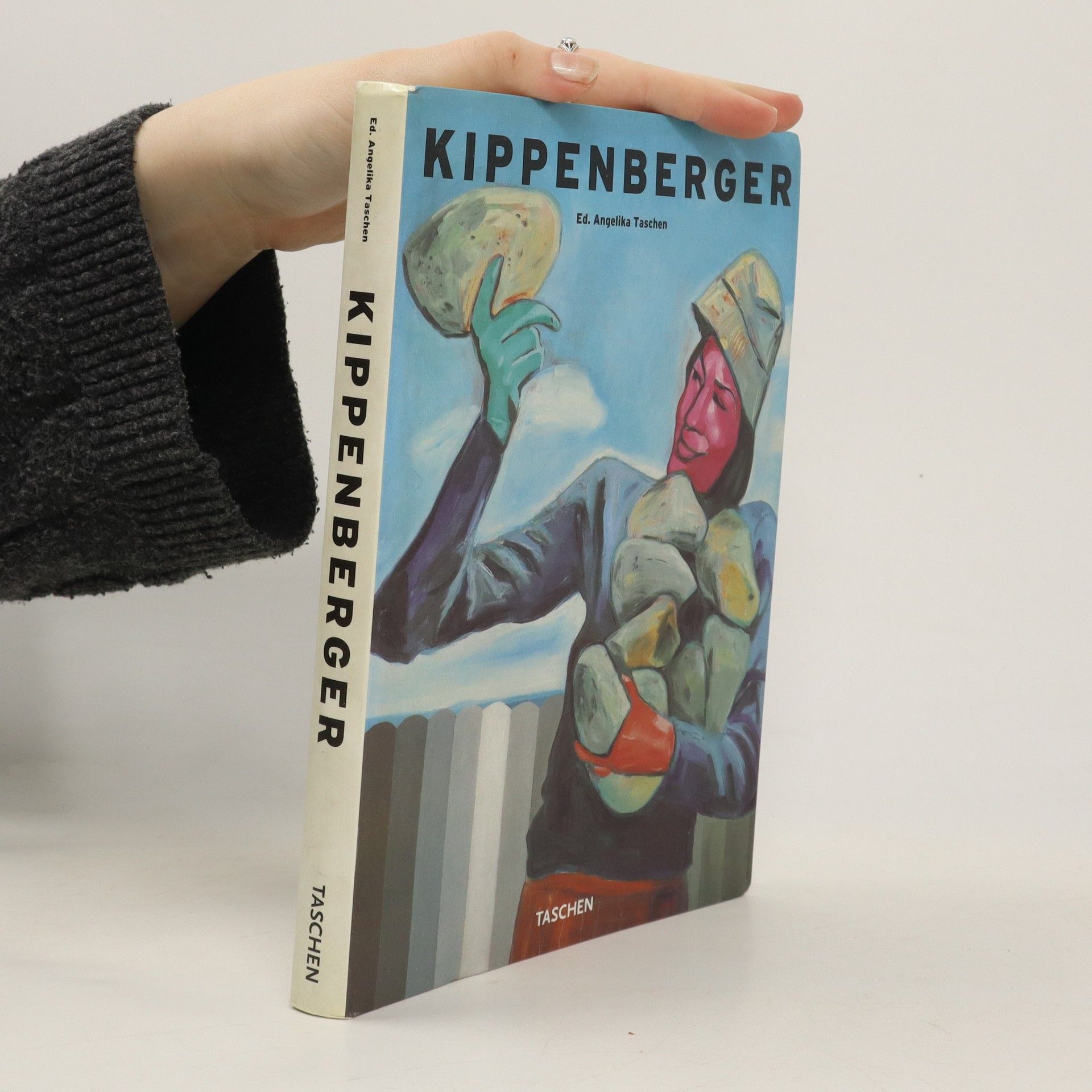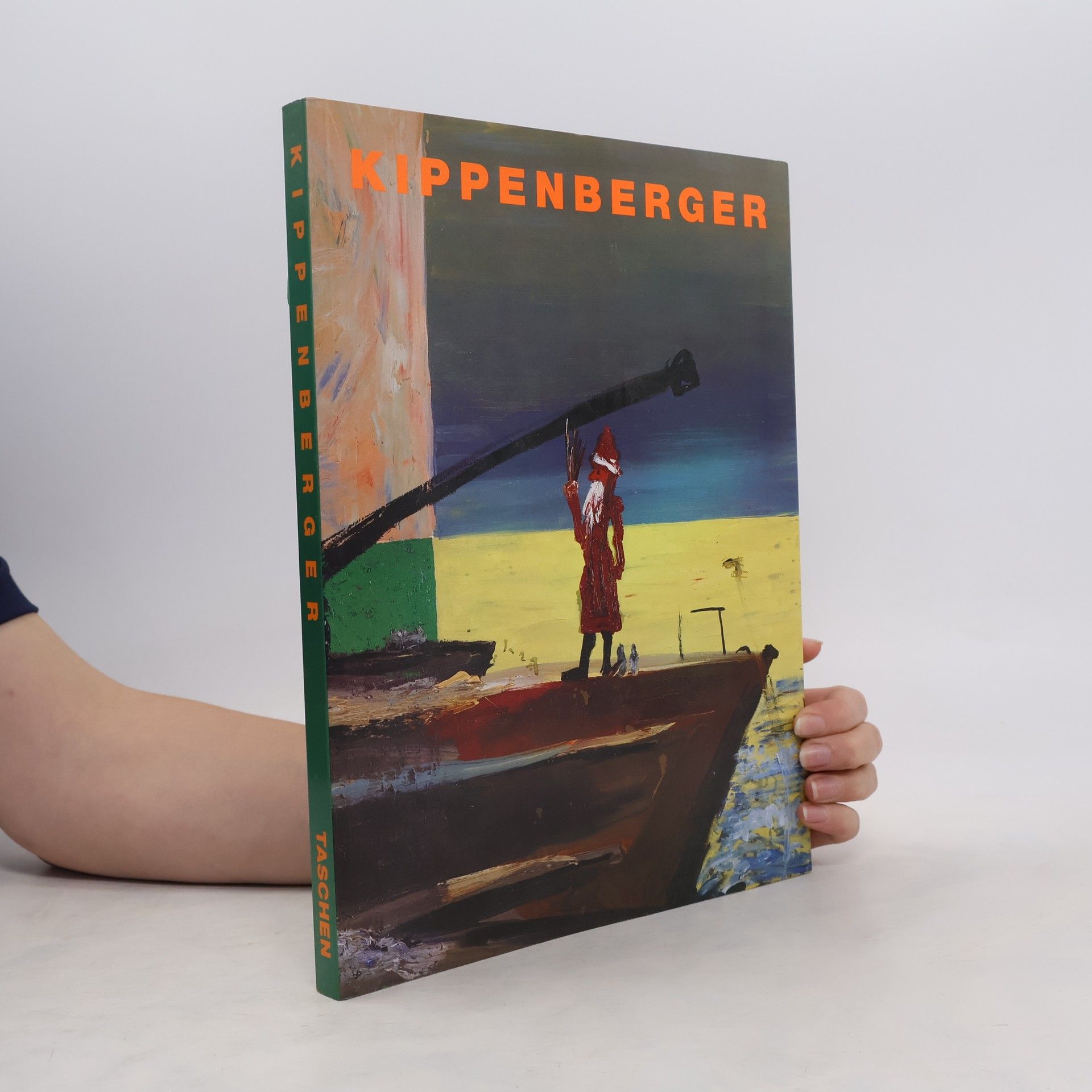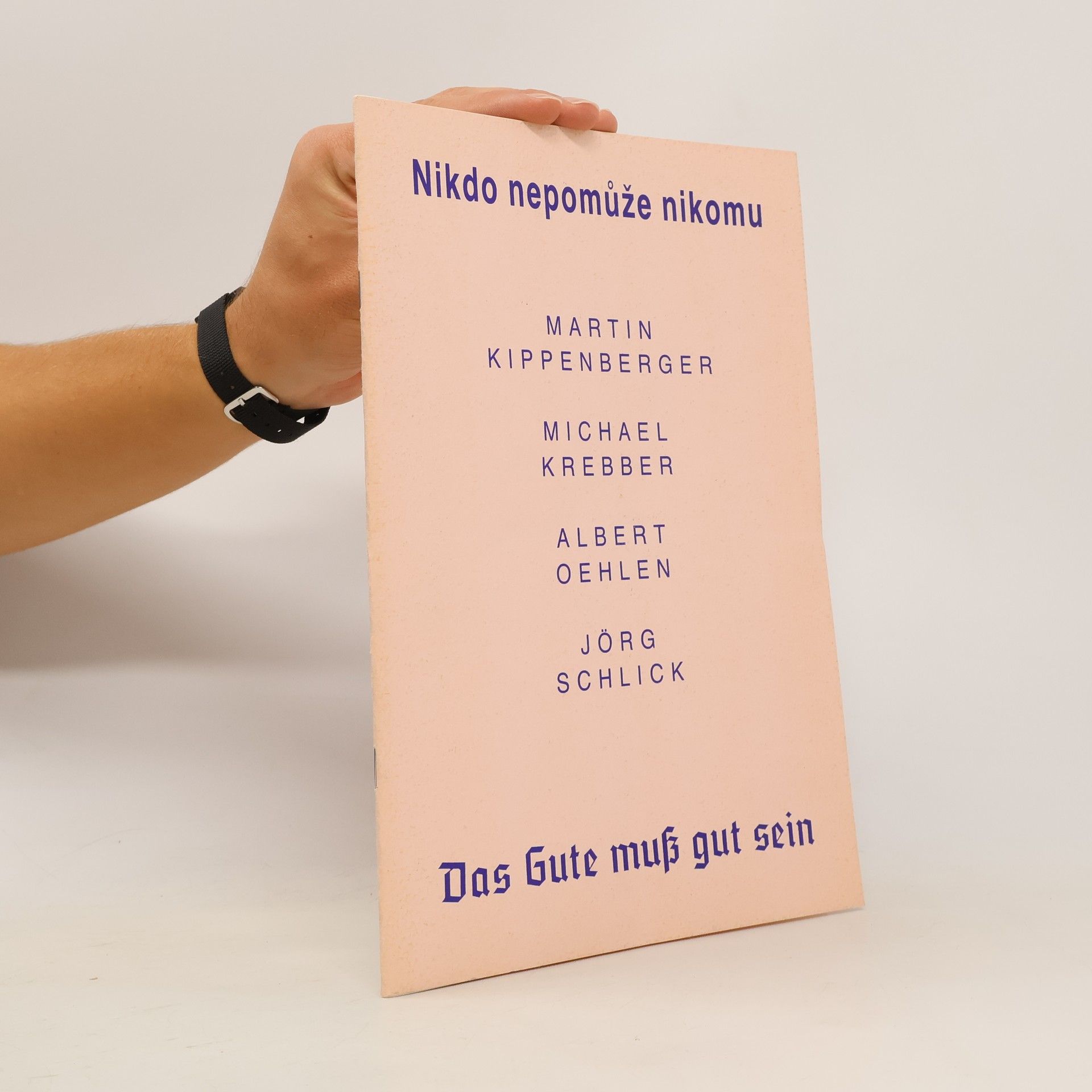Martin Kippenberger Libri






Martin Kippenberger
- 160pagine
- 6 ore di lettura
Die Publikation unternimmt einen Rückblick auf das gesamte Werk von Martin Kippenberger (1953-1997) und präsentiert Gemälde und konzeptionelle Malereiprojekte - etwa Lieber Maler, male mir. (1981), Heavy Burschi (1991), Die weißen Bilder (1992) sowie Skulpturenensembles, Multiples, Zeichnungen, Plakate, Bücher und bislang unveröffentlichte Materialien. Im Zentrum steht dabei Kippenbergers raumgreifende Installation The Happy End of Franz Kafka's „Amerika“ (1994): Auf grünem Spielfeld arrangierte Tische und Stühle als vielschichtiges szenisches Setting für Einstellungsgespräche, frei nach der bei Kafka beschriebenen Anwerbungsprozedur von Artisten und Arbeitskräften für einen Zirkus. Ironisch, parodistisch, subversiv, jedoch gleichzeitig mit hohem ethischen und künstlerischen Anspruch entfaltet Kippenberger ein breites Bedeutungsspektrum von individuell, sozial und künstlerisch wirksamen Ein- und Ausschlussverfahren. Ausstellungen: Tate Modern, London 8.2.-7.5.2006 · K21 Kunstsammlung Nordrhein-Westfalen, Düsseldorf 10.6.-10.9.2006
Wie es wirklich war. Am Beispiel
- 359pagine
- 13 ore di lettura
»Ich brauch keinen Lektor, ich kann mich selber lenken, wenn ich mich wieder bücken kann. Und ich lach darüber, wenn jemand das nicht haben will oder nur ein Buch davon verkaufen will oder es nicht drucken will … Ich lach mich tot.« Zehn Jahre nach seinem frühen Tod scheint Martin Kippenberger so kanonisiert, wie er zu Lebzeiten umstritten war. Allerdings wird er dabei oft nur als Maler wahrgenommen, kaum dagegen als die epochale Integralgestalt, die auf ihre Art so gut wie alles machte: Kunst, Performances, Skandale, Feiern, Reisen, Punkrock, Kalauer und nicht zuletzt auch Bücher. Diedrich Diederichsen, der Kippenbergers Weg aus nächster Nähe verfolgt hat, präsentiert eine Auswahl aus den inzwischen schwer gesuchten Textpublikationen, namentlich Café Central. Skizze zum Entwurf einer Romanfigur, Durch die Pubertät zum Erfolg und 1984 wie es wirklich war am Beispiel Knokke. Martin Kippenberger (1953 –1997), Künstler, Kunstsammler, Autor, Clubbetreiber (SO 36), Schauspieler, Mitglied der Lord Jim Loge. Diedrich Diederichsen, geboren 1957 in Hamburg, war in den 80er Jahren Redakteur von Musikzeitschriften, in den 90ern Hochschullehrer. Er lebt in Berlin.
50 Jahre alt wäre der 1997 verstorbene Künstler Martin Kippenberger im Februar 2003 geworden. Dies ist der Anlass, eine Publikation herauszubringen, die mit über 500 seit 1976 entstandenen Arbeiten einen umfassenden Überblick über Gemälde, Plakate, Fotografien, Skulpturen und Zeichnungen bis hin zu raumgreifenden Installationen gibt. Ziel ist es, Kippenbergers eigenwillige, kritische und zugleich provokative, ironische Auseinandersetzung mit Themen aus Kunstgeschichte und Kunstbetrieb ebenso wie Trivial- und Subkultur erstmals seit langer Zeit umfassend zu dokumentieren. Vor allem durch die Aufnahme vieler seltener gezeigter Arbeiten wird es möglich, mit einem gewissen Abstand ein Werk in Nuancen zu erfassen, die in der bisherigen Rezeption aus dem Blickfeld gerieten. Durch einen Aufbau nach thematisch zusammenhängenden Blöcken wird darüber hinaus auf eine Strategie dieses Künstlers hingewiesen, der die irritierende Vielfalt seiner Kunstwerke mit der Arbeit in thematischen Serien und Blöcken konterkarierte.
Kippenberger
- 240pagine
- 9 ore di lettura
Stellen Sie sich vor, ein Mond scheint am Himmel
Gespräch mit Martin Kippenberger
Martin Kippenberger: XYZ
- 297pagine
- 11 ore di lettura
Zu Lebzeiten umstritten setzte mit seinem frühen Tod eine einzigartige Erfolgsgeschichte ein. Die großen Museen der Welt, wie z. B. die Tate Modern, das MoMA und die Nationalgalerie Berlin, richteten Retrospektiven ein, in denen Kippenberger vorwiegend als Maler und Zeichner gewürdigt wurde. XYZ widmet sich erstmals der Sprache des Ausnahme-Künstlers, der so gut wie alles machte: Kunst, Performances, Skandale, Feiern, Reisen, Punkrock, Kolumnen, Wortwitze, Einladungskarten, Plakate und Bücher.
Martin Kippenberger, der nach seinem exzessiven Leben mit nur 44 Jahren verstarb, gilt als einer der wichtigsten Künstler seiner Generation. Kippenberger war Maler, Schriftsteller, Musiker und vieles mehr. Ein Enfant terrible in der Kunstwelt der 1980er Jahre. Die von Kippenberger überwiegend für seine eigenen Arbeiten und Ausstellungen geschaffenen Plakate zeigen eine zentrale Seite seines multimedialen Schaffens. In der Schau »Du kommst auch noch in Mode« – Plakate von Martin Kippenberger offenbart sich auf ganz eigenständige Weise der für Kippenberger charakteristische, häufig ins Absurde getriebene Humor und die ihm eigene Ironie. Das Museum Folkwang erwarb 2013 mit Unterstützung der Eugen-und-Agnes-von-Waldthausen-Platzhoff-Museums-Stif - tung ein umfangreiches Konvolut von Martin Kippenbergers Plakaten. Die Neuerwerbung umfasst 107 seiner insgesamt 178 geschaffenen Plakate, zusammengefasst in drei Mappenwer - ken: Gute Rückentwicklung kennt keine Ausreden, Mut zum Druck und O. T. Maniac, zudem zahlreiche Einzelplakate. Durch dieses Konvolut werden die wenigen Kippenberger-Pla - kate, die sich bereits in der Sammlung des Deutschen Plakat Museums befanden, hervorragend ergänzt .

